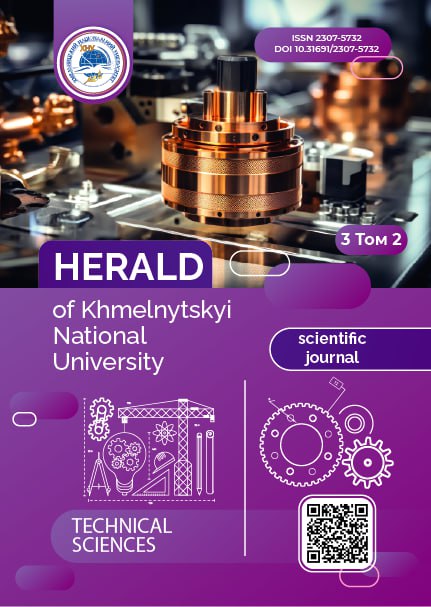SUBSTITUTION OF KINEMATIC AND DESIGN CHARACTERISTICS OF THE ROTOR OF RAKE-TEDDERS TO ENSURE EFFECTIVE GRASS RAKING
DOI:
https://doi.org/10.31891/2307-5732-2025-353-20Keywords:
stirring, raking, hay, kinematics, design characteristics, rakeAbstract
The paper considers the technological aspects of haymaking with a special emphasis on the processes of stirring and raking mowed grass, which are important stages for ensuring high quality forage. Particular attention is paid to the kinematic and design characteristics of the tedder rotor, since it is these parameters that determine the efficiency of the working elements of the machine and affect the speed and uniformity of grass drying.
In particular, the paper analyzes the relationship between the kinematic parameters of the rake movement and the design characteristics of the rotor, which is the basis for optimizing the operation of agricultural machinery. The influence of the trajectories of the end points of the rake fingers on the quality of the grass raking process is assessed, and the projections of these trajectories onto the coordinate plane are also considered, which allows determining the time required to achieve the maximum values of the points' movement.
As a result of the study, it was found that the efficiency of stirring and raking grass largely depends on the correct coordination of the design and kinematic parameters of the machines. Conditions for ensuring continuous raking of grass without gaps between trajectories have been determined, which guarantees the quality and productivity of work.
The results obtained allow improving the design of rake-tedders with centrifugal working bodies, taking into account their kinematic and structural characteristics. This can significantly increase the efficiency of agrotechnical processes of hay harvesting and reduce the cost of time and resources, which is an important aspect for farmers working on large areas of agricultural land. The use of such approaches also allows ensuring stable hay quality and reducing nutrient losses during drying, which contributes to increasing the overall productivity of agriculture.
Downloads
Published
Issue
Section
License
Copyright (c) 2025 ІННА ТЕЛЯТНИК, ЮРІЙ ПАЛАДІЙЧУК, ПАВЛО СТЕЦЮК (Автор)

This work is licensed under a Creative Commons Attribution 4.0 International License.

